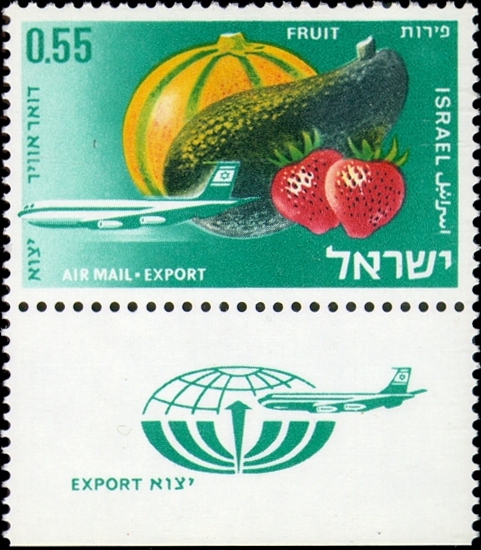Fruit (p’ri) plays a central role in Judaism, from the forbidden fruit in the Garden of Eden to the seven species — which includes grapes, figs, and pomegranates — brought as first fruit (bikkurim) offerings to the Temple in Jerusalem.
Notable Sources
All Sources
A
The Forbidden Fruit of the First Three YearsTANAKH
The Forbidden Fruit of the First Three Years
TANAKH
The Torah commands that the fruit of a tree is forbidden for the first three years after it is planted. The book of Leviticus, the third book of the Torah, includes this agricultural law as part of its broader theme of holiness.
The Spiritual Fruits of IsraelCHASIDUT
The Spiritual Fruits of Israel
CHASIDUT
The seven species of fruits are not just agricultural products but are deeply connected to the spiritual attributes of the Land of Israel. In his contemporary work, Zev Reichman explores the mystical connection between the seven species and the seven lower Sephirot, revealing the unique sanctity of the Land of Israel.
Miraculous FruitTALMUD
Miraculous Fruit
TALMUD
In the Talmudic tractate Taanit, Rabbi Yosei from Yokrat's son miraculously caused a fig tree to bear fruit out of season to feed hungry workers, illustrating divine intervention in response to human need (Taanit 24a:3-4).
The Spiritual Act of First FruitsCHASIDUT
The Spiritual Act of First Fruits
CHASIDUT
The commandment of the first fruits (bikkurim) is not just an agricultural practice but a profound spiritual act that connects physical offerings to divine attributes. Rabbi Shmuel Bornsztain of Sochatchov, in his early 20th-century homiletical teachings, explores how bringing the first fruits to the Temple symbolizes accepting the yoke of the kingdom of Heaven.
The Impact of the Temple's Destruction on FruitTALMUD
The Impact of the Temple's Destruction on Fruit
TALMUD
The destruction of the Temple significantly affected the quality and blessing of fruits, connected to issues of purity and the separation of tithes. This theme from the Talmud is illustrated through the story of Rav Huna and his son Rabba.
The Unique Classification of the Etrog TreeTALMUD
The Unique Classification of the Etrog Tree
TALMUD
The etrog tree is uniquely classified in Jewish law, blending characteristics of both trees and vegetables. The Talmud in Tractate Rosh Hashanah explains how the etrog tree is treated like an ordinary tree in three ways and like a vegetable in one way.
The Mystical New Year for TreesKABBALAH
The Mystical New Year for Trees
KABBALAH
Tu BiShvat, the 15th of Shevat, is not just about planting trees but also about the divine flow of abundance from the supernal realms to the earthly realm. The Tu BiShvat seder, originating from the school of Rabbi Isaac Luria, includes prayers, the order of fruits to be eaten, and the blending of wine, all aimed at connecting the physical growth of fruit with spiritual abundance.
Exemptions in 'Orlah LawsTOSEFTA
Exemptions in 'Orlah Laws
TOSEFTA
The laws of 'orlah, which prohibit consuming fruit from a tree during its early years, have specific exemptions based on the tree's intended use. The Tosefta, a late 2nd-century compilation of Jewish oral law, elaborates on these exemptions and conditions.
The First Sin and the FruitSECOND TEMPLE
The First Sin and the Fruit
SECOND TEMPLE
The story of the first sin involving the fruit is a foundational narrative that explains the human condition and the introduction of sin. Philo of Alexandria, a first-century Jewish philosopher, offers a retelling of the Genesis story, emphasizing the serpent's temptation and the missed opportunity to choose the tree of life.
The Specific Types of First FruitsCOMMENTARY
The Specific Types of First Fruits
COMMENTARY
The Mishnah Bikkurim specifies that not only the bikkurim themselves but also the fruits used for decoration must be limited to the specific types mentioned in Deuteronomy, to avoid any confusion about the nature of the offering.
The Symbolism of the EtrogJEWISH THOUGHT
The Symbolism of the Etrog
JEWISH THOUGHT
The etrog symbolizes the ideal Jew, embodying both Torah knowledge and good deeds. Eliezer Berkovits, a 20th-century Jewish philosopher, explores the symbolic representation of the etrog in the context of Jewish unity and diversity.
Designating the First FruitsMISHNAH
Designating the First Fruits
MISHNAH
The Mishnah provides a detailed and fascinating procedure for designating the first fruits, which includes tying a reed-rope around the ripened fruit and, according to Rabbi Shimon, designating them again after they have been plucked. The Mishnah Bikkurim, part of the first order of the Mishnah, Zera'im, outlines the ancient practice of offering the first fruits in the Temple, a practice commemorated today during the festival of Shavuot.
The Patience of OrlahMUSAR
The Patience of Orlah
MUSAR
In his 17th-century work, Rabbi Isaiah HaLevi Horowitz delves into the Torah's commandment of Orlah, which requires abstaining from eating fruit from a newly planted tree for the first three years. This prohibition underscores the values of patience and sanctity inherent in Jewish agricultural laws.
Pomegranates in the SanctuaryTANAKH
Pomegranates in the Sanctuary
TANAKH
Pomegranates were a significant decorative element in the sacred space of the inner Sanctuary. The book of II Chronicles details the intricate craftsmanship of the inner Sanctuary, including the use of pomegranates in the chainwork.
The Blessing for New FruitsHALAKHAH
The Blessing for New Fruits
HALAKHAH
The Shehecheyanu blessing is a special prayer recited to thank God for new and joyous experiences, such as eating a new fruit for the first time in a season. The Kitzur Shulchan Arukh, a condensed version of the Shulchan Arukh, provides detailed guidelines on when and how to recite this blessing.
Blessings Over FoodGUIDES
Blessings Over Food
GUIDES
Jewish tradition includes specific blessings for different types of food, reflecting a deep appreciation for God's sustenance. The Babylonian Talmud details the blessings recited over various foods, from fruits to grains, emphasizing the importance of gratitude in daily life.



